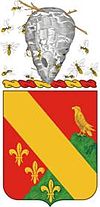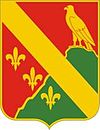The 201st Field Artillery Regiment is a West Virginia Army National Guard regiment. It currently perpetuates the Virginia elements of the Maryland and Virginia Rifle Regiment, which fought in the American Revolution. Organized by Colonel Morgan Morgan in Bunker Hill, West Virginia in 1735, it is one of the oldest continually-active regiments in the U.S. Army, and the oldest unit in the West Virginia Army National Guard. Units also saw action on both sides of the American Civil War, with many companies of the regiment combined to form the Union Army's 1st West Virginia Infantry.

The 252nd Armor Regiment is an armored regiment of the North Carolina Army National Guard, part of the 30th Armored Brigade Combat Team, which in turn is part of the 29th Infantry Division.
The 80th Training Regiment is a training unit of the 80th Training Command. Its battalions are assigned to several different training divisions of the command.
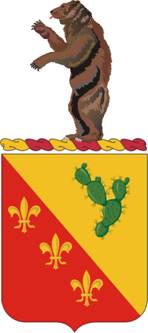
The 129th Field Artillery Regiment is a regiment of the Field Artillery Branch of the United States Army, part of the Missouri Army National Guard. The 1st Battalion is the only active unit of the regiment, with the battalion Headquarters and Headquarters Battery in Maryville, Battery A in Albany, Battery B in Chillicothe, and Battery D in Independence. The battalion is a subordinate unit of the 130th Field Artillery Brigade, headquartered in Manhattan, Kansas.
The 11th Coast Artillery was a coast artillery regiment in the United States Army, first constituted in the Regular Army on 27 February 1924. It primarily served as the Regular Army component of the Harbor Defenses of Long Island Sound, New York from 1924 through 1944, when it was relieved and disbanded as part of an Army-wide reorganization.
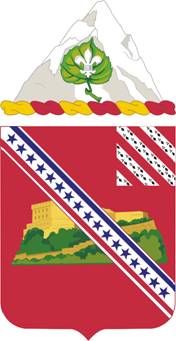
The 17th Field Artillery Regiment is a field artillery regiment of the United States Army first formed in 1916.
The 30th Field Artillery Regiment is a field artillery regiment of the United States Army, first constituted in 1918 in the National Army (USA).
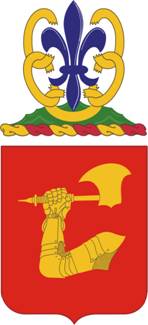
The 40th Field Artillery Regiment is a field artillery regiment of the United States Army, first Constituted 5 July 1918 in the National Army (USA).

The 77th Field Artillery Regiment is a field artillery regiment of the United States Army. First constituted 1916 in the Regular Army as a cavalry regiment. Reorganized in 1917 as field artillery and given its current designation.

The 133rd Field Artillery Regiment is a parent field artillery regiment of the United States Army National Guard. It is currently represented in the Texas Army National Guard by the 1st, 3rd, and 4th Battalions.

The 84th Field Artillery Regiment is a field artillery regiment of the United States Army.

The 300th Field Artillery Regiment is a Field Artillery regiment of the United States Army.
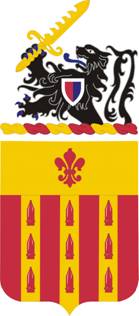
The 333rd Field Artillery Regiment is a regiment of the Field Artillery Branch of the United States Army.

The 146th Field Artillery Regiment is a field artillery regiment of the Army National Guard first Constituted in 1886 as the 1st, and 2nd Regiments of Infantry.
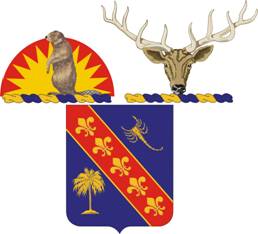
The 148th Field Artillery Regiment is a Field Artillery Branch regiment of the Army National Guard.
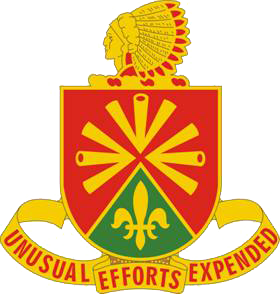
The 158th Field Artillery Regiment is a Field Artillery regiment of the Army National Guard.

The 197th Field Artillery Regiment is a regiment in the New Hampshire Army National Guard.
The 213th Air Defense Artillery is a regiment in the Pennsylvania Army National Guard.
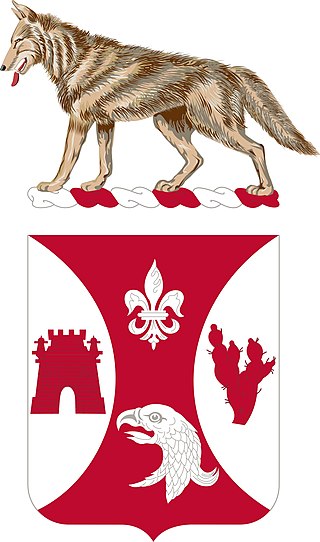
The 196th Infantry Regiment is an infantry regiment of the United States Army National Guard. It traces its lineage to units which have been both infantry and engineers.
The 907th Glider Field Artillery Battalion, also designated as the 907th Field Artillery Battalion and as the 907th Airborne Field Artillery Battalion, is an inactive field artillery unit of the United States Army. The battalion served in three campaigns with the 82nd Division during World War I; with the 101st Airborne Division during World War II, seeing action in four campaigns, including the Invasion of Normandy, Operation Market Garden and the Battle of the Bulge. After a brief service in the Organized Reserve from 1948-1950, the battalion returned to active duty and the 101st Airborne Division briefly from 1956-1957, before its final inactivation.
